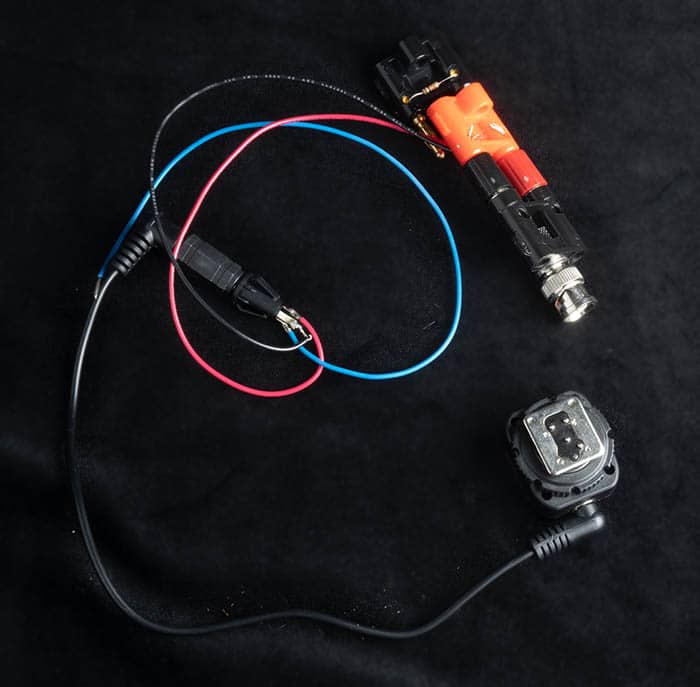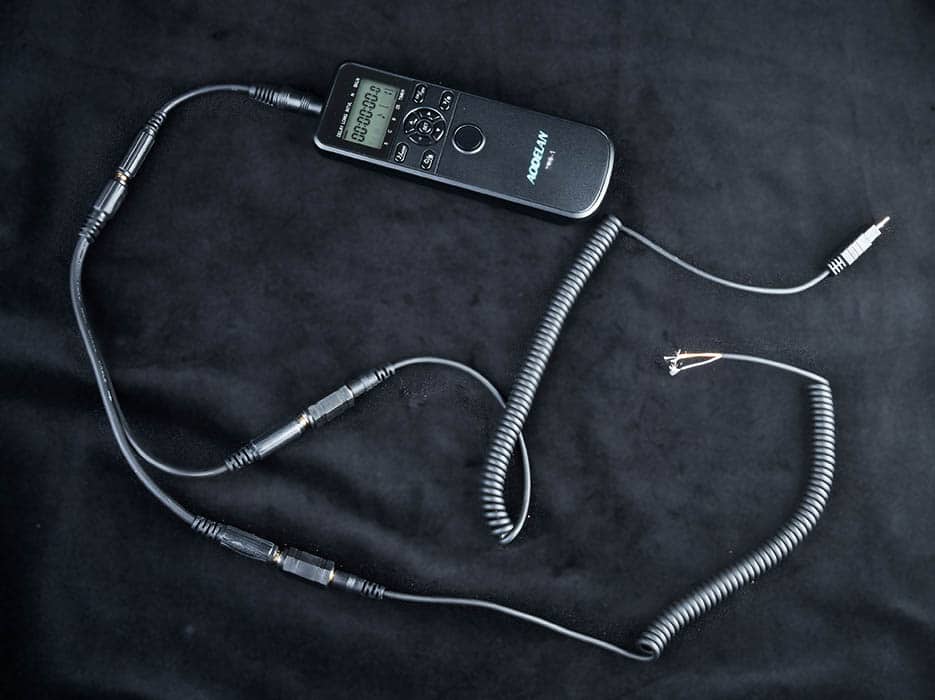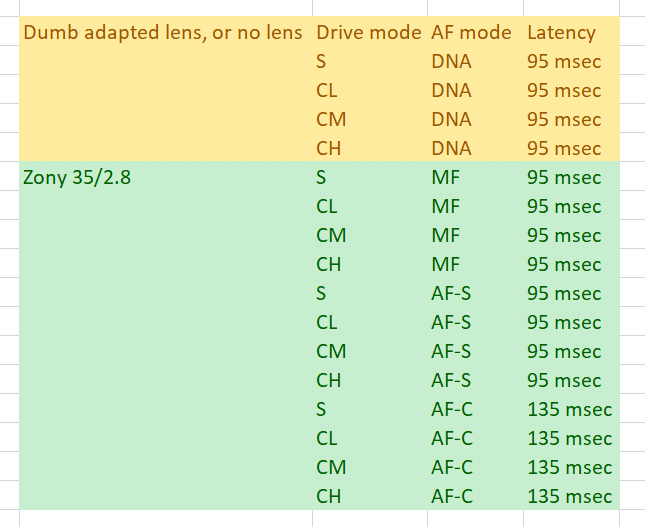This is a continuation of a series of posts on the Sony a7III. You should be able to find all the posts about that camera in the Category List on the right sidebar, below the Articles widget. There’s a drop-down menu there that you can use to get to all the posts in this series; just look for “a7III”.
A few weeks ago, Erik Kaffehr suggested a way to measure the shutter latency of a camera: trigger it with a remote release, and measure the time to shutter opening (end of first curtain travel) by looking at the X-sync output. The a7III doesn’t have a PC connector, so I rigged up this setup to observe the shutter opening.
The hotshoe goes on top of the camera, and I’ve plugged a cable into the PC connector that teminates in a male 2.5mm plug. I bought a 2.5 mm panel mount socket and wired the black lead to the ground terminal and the red lead to the tip. The camera provides a dry contact closure, so I hooked the free end of the 10K ohm resistor in the black GR plug to an hp power supply that I set for 2 volts. This gives me a 2-volt signal when the synch contact in the camera is open and essentially zero when it’s closed. The BNC connector plugs into the vertical input of an oscilloscope.
Now I need a way to trigger the camera, and use that trigger to trigger the ‘scope, too.
I used the Sony remote release at the top of the image, with a Y-splitter to a USB connector at the top that goes into the camera, and some open wires at the bottom that I use for ‘scope triggering. I don’t need a power supply since the camera supplies the voltage.
It works great. Here are the results with the all-mechanical shutter (Skip to here to see the results with EFCS, which are quite bit faster):
You can probably subtract 3 milliseconds to get the time to the beginning of the shutter opening. The AF times are measured from the contact closure after AF acquisition is complete.
It is interesting to me that using continuous AF adds latency. The difference is probably insignificant in most situations, though.
For a comparison, the Nikon D5 in single-shot, swinging mirror MF mode, has a latency of 45 msec. Considering that the mirror needs to get out of the way, that’s impressive!



Daniel says
Did you try changing the setting in “Priority Set in AF-S” and “Priority Set in AF-C” (Menu 1, Page 5) between “AF-priority” and “release-priority” and see any difference in latency _after_ focus had been acquired?
JimK says
Good idea. I didn’t, but I’ll take a look.
CarVac says
Can you compare that against your Nikons?
I believe the pro Canons and Nikons claim latency as fast as 35 milliseconds when the aperture is wide open (in the mode where you let the shutter lag vary as necessary to be as fast as possible), which seems unbelievable when something with no moving parts (silent mode here) takes almost three times longer…
JimK says
Possibly. I’d have to rig up some different cables and figure out the pinout on the Nikon remote, which doesn’t sound like much fun. Maybe someone has already done it.
Found what I need:
https://www.amazon.com/Nikon-Remote-Banana-Cameras-D4Cameras/dp/B00009XV5A
Ordered.
Richard says
Very useful info here. The shutter latency of many A7 cameras limits their use for high speed sync flash photography when shooting moving subjects. High speed sync requires that the EFCS is disabled in order to prevent banding.
On the A7II and A7R2 the lag was over 300ms. This compares to a lag as low as 20ms when shooting with EFCS enabled.
The A7III’s lag looks much better, but it may still too slow for fast action HSS flash photography. Even a subjects eyes may fall out of focus when they walk towards you with a 95ms lag – if you’re shooting wide open. If you have somebody on a bike or skateboard,or a dancer, then you’ll hit real problems with the A7ii.
Thanks for this post.